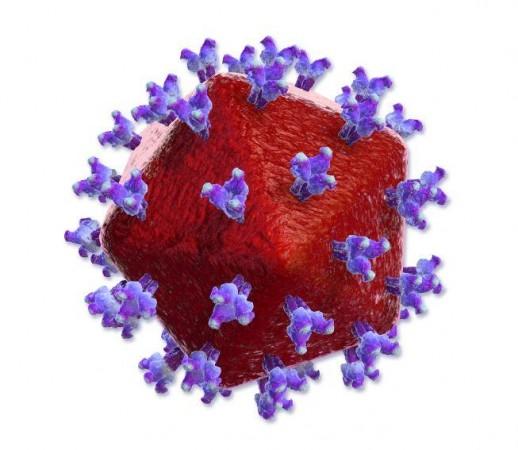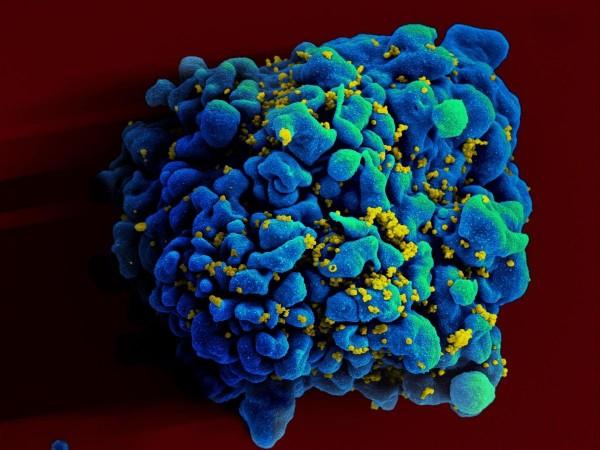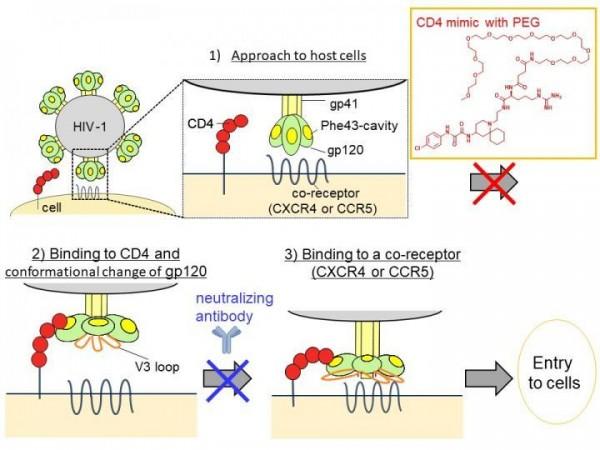As the COVID-19 pandemic continues to rage for a second year, another pandemic has managed to persist for over three decades and has continued to claim thousands of lives a year—the Human immunodeficiency virus (HIV). Presenting results that can advance the treatment of HIV, scientists have created molecules that prevent the virus from invading immune cells.
In a study led by researchers from the Tokyo Medical and Dental University (TMDU), researchers have reported the development of small molecules known as 'CD4 mimic' that can trick the HIV virus from attaching itself to the surface of immune cells.
A Deadly Virus

HIVs are retroviruses that invade and infect cells that are associated with the immunity system and protect the body from infections. Eventually, it can lead to acquired immunodeficiency syndrome (AIDS), where the immune system of the body becomes fragile and incapable of defending the body, thereby, leaving it vulnerable to other infections and diseases.
According to the WHO, as of 2019, around 38 million people are living with HIV/AIDS worldwide, and approximately 690,000 lost their lives due to HIV-related causes in 2019 alone. So far, around 33 million people in total have succumbed to the deadly infection. It can strike people of any age, and is transmitted through contact with body fluids of infected persons and through sexual contact. It can also spread via other routes such as blood transfusions or from mother to fetus.
The virus attacks immune cells—cells that protect the body from infections—such as T-helper cells that are essential in the body's counterattack. By attaching to a protein called CD4 that is found on the surface of the T-helper cells, the viral particles enter the cells. Upon gaining entry into a T-helper cell, it hijacks the cell's reproduction mechanism and begins making copies of itself. Eventually, the host is killed.
Developing an Impostor Molecule

Though treatments such as antiretroviral drugs that function by attempting to impede the reproduction process exist, preventing the virus from attacking immune cells in the first place could be a better form of therapy. In order to test the viability of such a remedy, the authors developed a new class of molecules that function as 'decoy' CD4 proteins.
The viral HIV particles attach themselves to the 'fake' molecules rather than the protein molecules on the surface of the cells. Also, that team found that the addition of polyethylene glycol (PEG)—a compound synthesized from petroleum—enhanced the pharmacokinetics(interaction of the drug with the body.

"Hybrid molecules that mimic CD4 and also have a PEG unit attached with an uncleavable linker showed better anti-HIV activity with lower cytotoxicity," said Takuya Kobayakawa, first author of the study, in a statement.
Testing a Promising Molecule
In order to support their hypothesis, the authors ran computer simulations. A crucial part of their hypothesis was that molecule functions better due to its electrostatic interaction with a carboxylate (a salt) group on the virus. In tests involving a rhesus macaque, the new mimic molecule remained in the body longer in comparison to the parent compound.
"These CD4 mimics have strong synergistic interactions with neutralizing antibodies for fighting HIV," stressed Hirokazu Tamamur, senior author of the study. The scientists concluded that new combination treatment regimens could be developed to leverage the advantage of the newly developed particles.

















